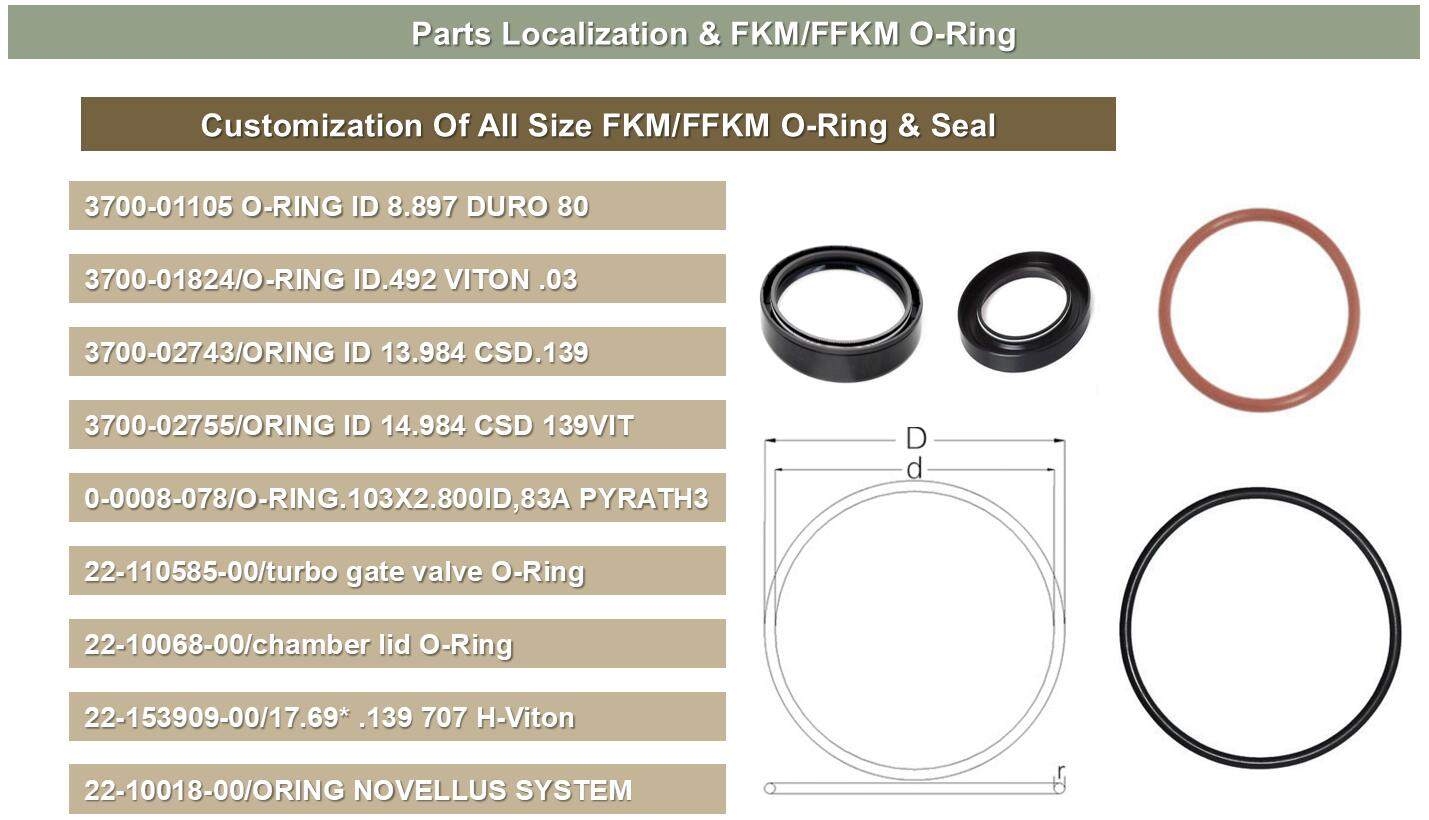Introduction
In the realm of modern industry, rubber materials have become indispensable due to their exceptional properties such as elasticity, wear resistance, and chemical resistance. Among these, fluorine rubber (FKM) and perfluoroether rubber (FFKM) stand out as high-performance rubbers, renowned for their superior chemical and high-temperature resistance. This comprehensive analysis delves into the differences, applications, costs, forms, and properties of FKM and FFKM, aiming to provide valuable insights for stakeholders in related industries.
The Basic Differences Between Fluorine Rubber (FKM) and Perfluoroether Rubber (FFKM)
Chemical Structure
The primary distinction between FKM and FFKM lies in their chemical structures. FKM is a partially fluorinated polymer with carbon-carbon bonds (C-C) in its main chain, whereas FFKM is a fully fluorinated polymer with a carbon-oxygen-carbon (C-O-C) structure, connected by oxygen atoms (O). This structural variance赋予FFKM superior chemical and high-temperature resistance compared to FKM.
Chemical Resistance
FFKM’s main chain, devoid of carbon-carbon bonds, offers enhanced resistance to chemical media. As illustrated in the accompanying figure, the bond energy of carbon-hydrogen bonds is the lowest (approximately 335 kJ/mol), which can make FKM less effective in strong oxidants and polar solvents compared to FFKM. FFKM is resistant to almost all known chemical media, including strong acids, bases, organic solvents, and oxidants.
High-Temperature Resistance
FFKM also excels in high-temperature resistance. While FKM’s continuous operating temperature typically ranges from 200-250°C, FFKM can withstand temperatures up to 260-300°C. This high-temperature stability makes FFKM particularly suitable for applications in extreme environments.
Application Fields
Fluorine Rubber (FKM)
FKM is widely utilized in various fields due to its excellent chemical resistance and moderate high-temperature resistance:
-
Automotive Industry: FKM is employed in the manufacture of seals, oil seals, O-rings, and more, particularly in engines and transmission systems.
-
Chemical Industry: FKM is used for seals in pipes, valves, pumps, and other equipment to prevent chemical media leakage.
-
Electronics Industry: It is used for insulation layers in wires and cables, especially in high-temperature and chemically corrosive environments.
Perfluoroether Rubber (FFKM)
FFKM is employed in fields that demand outstanding chemical and high-temperature resistance:
-
Aerospace: FFKM is used for seals in aircraft and spacecraft to endure extreme temperatures and chemical environments.
-
Semiconductor Industry: It is used for seals in semiconductor manufacturing equipment to prevent chemical gas leakage.
-
Petrochemical Industry: FFKM is used for seals in high-temperature and high-pressure equipment in oil refineries and chemical plants.
Price and Cost
FFKM’s relatively high production cost results in a significantly higher market price compared to FKM. The complexity of FFKM’s raw materials and production process drives up its cost. However, given FFKM’s excellent performance in extreme environments, its higher price is justifiable in certain applications.
Form and Processing
Fluorine Rubber (FKM)
FKM is typically supplied as solid rubber, compound rubber, or preformed parts. Its processing methods include compression molding, extrusion, and injection molding. FKM requires specialized equipment and process parameters due to its relatively high processing temperature.
Perfluoroether Rubber (FFKM)
FFKM is also supplied in the form of solid rubber, compound rubber, or preformed parts. Its high-temperature resistance necessitates higher processing temperatures and more stringent equipment and process requirements.
Performance Comparison
Chemical Resistance
FFKM’s chemical resistance is significantly better than FKM’s. FFKM is resistant to almost all known chemical media, including strong acids, bases, organic solvents, and oxidants. Although FKM also offers good chemical resistance, it is less effective in some strong oxidants and polar solvents compared to FFKM.
High-Temperature Resistance
FFKM’s high-temperature resistance is superior to FKM’s. FKM’s continuous operating temperature is generally 200-250°C, while FFKM can reach 260-300°C. This high-temperature stability makes FFKM more widely applicable in extreme environments.
Mechanical Performance
Both FKM and FFKM possess excellent mechanical properties, including high elasticity, wear resistance, and tear resistance. However, FFKM’s mechanical properties are more stable at high temperatures, making it more reliable in high-temperature applications.
Market Prospects
With the continuous advancement of industrial technology, the demand for high-performance rubber materials is on the rise. FKM and FFKM have broad application prospects in various fields due to their excellent performance:
-
Automotive Industry: The development of new energy vehicles is increasing the demand for high-temperature resistant and chemically corrosion-resistant seals, further expanding the application of FKM and FFKM.
-
Chemical Industry: The diversification and complexity of chemical products are increasing the demand for chemically resistant seals, further expanding the application of FKM and FFKM.
-
Electronics Industry: The miniaturization and high performance of electronic devices are increasing the demand for insulating materials that are resistant to high temperatures and chemical corrosion, further expanding the application of FKM and FFKM.
Conclusion
Fluorine rubber (FKM) and perfluoroether rubber (FFKM), as representatives of high-performance rubbers, have broad application prospects in various fields due to their excellent chemical resistance and high-temperature resistance. Although FFKM is relatively expensive, its outstanding performance in extreme environments gives it an irreplaceable advantage in certain applications. With the continuous advancement of industrial technology, the demand for high-performance rubber materials will keep increasing, and the market prospects for FKM and FFKM are broad.
Post time: Jun-24-2025

